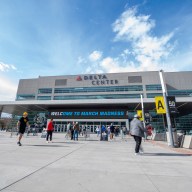Why do we act differently in crowded conditions than at other times?
Carrie Clynick of Toronto writes how things got out of control recently at St. George station: “I noticed when I was about halfway up the escalator (which was standing room only) that the flow of traffic on the stairs to my right had stopped. Too many people had congregated at the top … as they waited for the southbound train.
“Someone yelled, ‘Don’t get on the escalator!’ to the patrons below and … people certainly started to panic and cry out. I felt completely helpless and didn’t know what to do.
“It then became apparent that there was plenty of room on the north/south platform … but no one wanted to move from their spot.”
She continues, “What if there had been children or elderly people trapped up top with us? They might have been trampled.”
Spokesperson Brad Ross says the TTC does follow overcrowding protocols, including slowing trains to a crawl as they enter stations, dispatching supervisors to crisis locations, as well as turning off escalators to decrease passenger flow into a crowded area.
However, the reader describes a situation that may have developed in a very short period — at a key subway junction.
Ross states the TTC has more often sent personnel to severe crowding situations at the Yonge-Bloor interchange, urging patrons to move along platforms to more open areas.
He says this year the agency plans to improve the communication flow to and from station collectors.
The TTC may have a lot of upgrades to perform across the system, but I suggest a greater focus on the risks of subway crowding.
Riders — including those aboard packed buses or GO trains — can contribute by upping the courtesy factor during busy periods. Particularly avoid impeding passenger flow around doorways or escalators.
If you notice an inexplicably stopped escalator, tell station staff about it. Such alerts often come only from patrons.
















